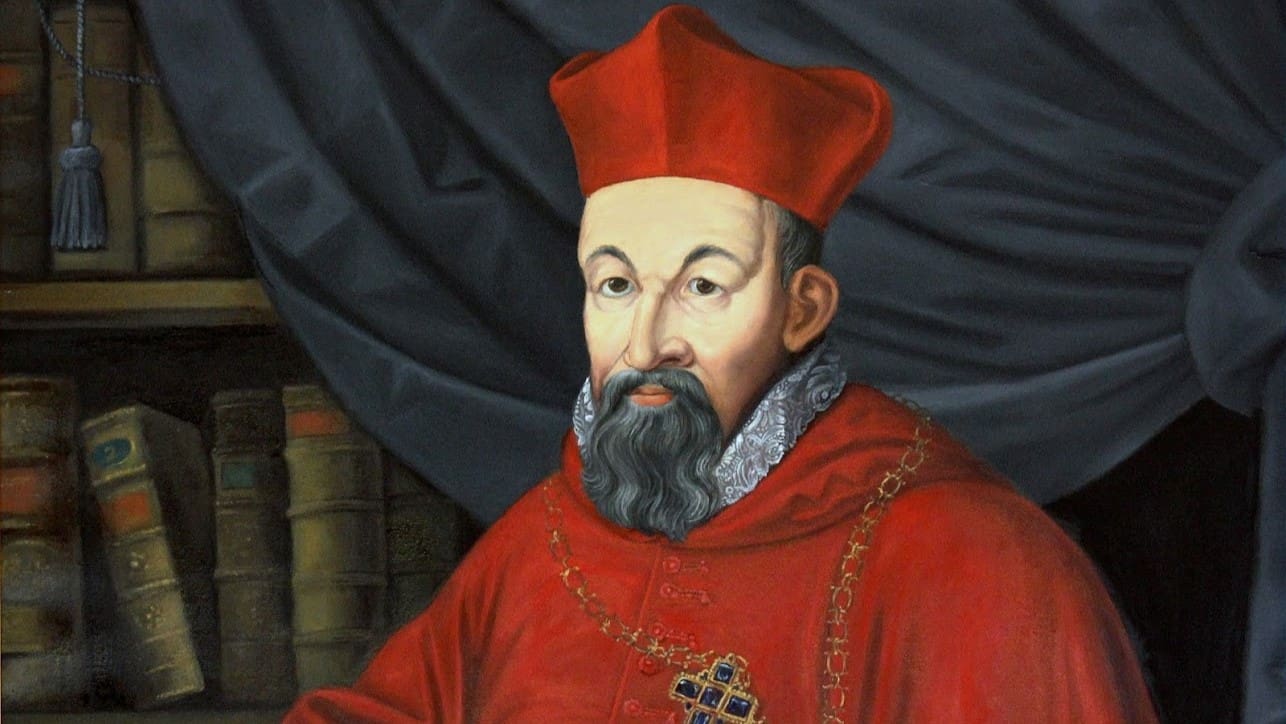Péter Pázmány, Hungarian philosopher, theologian, cardinal, pulpit orator, and statesman was born on this very day, 4 October, in 1570 in Nagyvárad, Principality of Transylvania (today’s Oradea, Romania). His impact on Hungarian culture goes way beyond religion, as evidenced by the fact that two universities bear his name (one in Vienna and one in Budapest), while a third, the Eötvös Loránd University also in Budapest, was founded by him as well.
Pázmány was born into a protestant family, which is ironic given the fact that he later became the leading figure in the Counter-Reformation movement aiming to re-catholicize Hungary in the 17th century. He was convinced to convert to Catholicism by his stepmother in 1583. In 1587, he entered the Society of Jesus, better known as the Jesuits. Since the Prince of Transylvania decided to crack down on Jesuits due to their efforts in the Counter-Reformation, the brightest of them were sent on a European trip to study to avoid the backlash—among them was the young Péter Pázmány, who went through his novitiate at Kraków in the Polish–Lithuanian Commonwealth, then studied philosophy in Vienna in the Habsburg Empire.
He first garnered national attention in 1608, at age 38, when he denounced the eighth point of the 1606 Treaty of Vienna in front of the Diet of Hungary in Pozsony (today’s Bratislava, Slovakia). He spoke out against the provision according to which Jesuits were prohibited from owning landed property in the Kingdom of Hungary.
His profile kept growing.
In September 1616, after being absolved of his Jesuit oath by the Pope, he was appointed by the Holy See Archbishop of Esztergom, the Primate of Hungary.
He began writing religious pamphlets countering protestant preachers in the early 1600s. He did so in ‘plain’ Hungarian spoken by the common men of the country, which was a break from the Catholic Church’s Latin tradition—prior to that, only Protestant pastors spoke and wrote in the local vernacular. In his efforts, not only did he produce works of significant literary value, such as the Christian Prayer Book (titled Keresztényi imádságos könyv in Hungarian, published in 1606) or the Guide Leading to Divine Truth (Isteni igazságra vezérlő kalauz, 1613), but he also devoted special attention to cultivating a literary Hungarian language, and lobbied for standardizing Hungarian spelling in his writings.
In 1623 in Vienna he founded a seminary for theological candidates, which is still in operation today under the name Collegium Pazmanianum. In 1635, he contributed 100,000 forints to the establishment of a new university in Nagyszombat (today’s Trnava, Slovakia).
The theology faculty of that institution became Pázmány Péter University, while the rest of the university became Eötvös Loránd University—both of them are located in Budapest, Hungary today.
In addition to his indelible impact on Hungarian culture, he also had a major role in shaping the country’s history.
In 1619, he was instrumental in convincing the Diet to crown Ferdinand II of the Habsburg dynasty as King of Hungary to succeed the childless Mathias II.
Péter Pázmány, Cardinal Archbishop of Esztergom, passed away in 1637 at age 66. His grave and corpse were discovered in 1859 in Bratislava.
Related articles:







